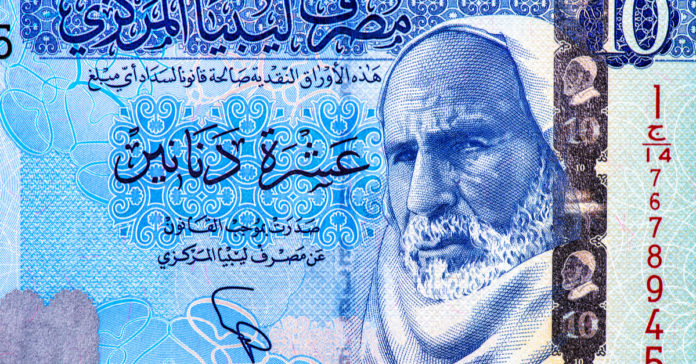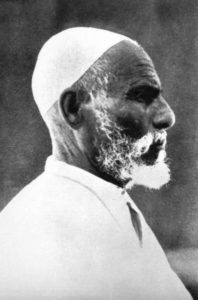On September 16, 1931, the Italian occupation authorities in Libya executed one of the greatest Muslim resistance fighters of the 20th century – the Lion of the Desert, Sheikh Omar Al-Mukhtar.
Omar Al-Mukhtar was 73 when he was hung in front of thousands of his supporters after a mock trial. But this sad end was preceded by two decades of heroic struggle when he led his troops to several victories against the fascist Italians who suffered huge losses.
When the Italians invaded Tripoli in 1911 they had hoped that the Libyans would view them as liberators from Ottoman rule, and they certainly didn’t expect that resistance would erupt against them for 20 years in the areas around Benghazi.
Italy’s fascist dictator, Benito Mussolini, suppressed the revolution by means of collective punishment, as 100,000 Libyans were deported from regions that were strongholds of the revolution to concentration camps where thousands died.
But despite his demise, today Sheikh Omar al-Mukhtar is a hero and an inspiration to Muslims all over the world who remember him by his words in response to the leaders of the Italian occupation when they demanded that he surrender: “We will not surrender, we will win or we will die.”
Lion of the Desert
Omar bin Al-Mukhtar was born in 1862 in the village of Zawyet Janzour in Cyrenaica, eastern Libya.
Subscribe to our newsletter and stay updated on the latest news and updates from around the Muslim world!
From his childhood he learned the Qur’an and later studied jurisprudence, hadith interpretation and the Arabic language at the hands of senior sheikhs, headed by Mahdi al-Senussi.
In 1897, Mahdi al-Senussi assigned him to be the sheikh of a town called Zawiyat al-Qusour in the Green Mountain region, and during that period he obtained the title of “My Master” which was only enjoyed by the elders of the Senussi movement.
Omar Al-Mukhtar also lived for years in Sudan, where there was a strong presence of the Senussi movement, acting on behalf of Mahdi Al-Senussi.
And it is reported that he gained his title “The Lion of the Desert” during a trip to Sudan. The story relates that he defended those who were with him on the trip against a lion that threatened them. Instead of running away, he rode his horse and shot the lion and then returned with its head.
After the death of Muhammad al-Mahdi al-Senussi in 1902 (the second in charge of the Senussi movement) Omar al-Mukhtar returned to Cyrenaica and was appointed again as the sheikh of the town of Zawiyat al-Qusour, where the Ottomans (who were ruling Libya at the time) welcomed his administration.
Years before his war against the Italians, Mukhtar had also fought the British on the Egyptian-Libyan border, and most significantly fought in the Battle of Salloum in 1908 which ended with the town falling into the hands of the British.
He also participated in the fighting that broke out between the Senussi and the French in the southern regions of Sudan, in addition to fighting the French when their colonisation of Chad began in 1900.
Brutal Italian occupation
In 1911 Italy declared war on the Ottoman Empire that was ruling Libya and its forces invaded. From that time onwards the 53-year-old Mukhtar led the Libyan resistance against the Italians for about 20 years, during which he inflicted huge losses amid the ranks of the Italians.
He was the commander in a number of major battles between the resistance and the Italian forces, including the two-day battle of Derna in May 1913 which ended with the deaths of 70 Italian soldiers and the wounding of about 400 others.
But the situation deteriorated further for the resistance when the fascists seized control of Italy in October 1922, after which they escalated their military operations in Libya.
Rome wanted to block the supply route against the resistance and occupied the oasis of Jaghboub, but this didn’t prevent the escalation of the resistance operations which prompted Mussolini to appoint General Badoglio as the military governor of Libya in January 1929.
Badoglio immediately expressed his desire to negotiate with Mukhtar, who responded positively and a two-month truce was concluded.
In his book “Omar Al-Mukhtar, Shahid of Islam and the Lion of the Desert,” Muhammad Mahmoud Ismail says that Mukhtar agreed to the truce in exchange for the return of Prince Muhammad Idris Al-Senussi, the withdrawal of Italians from Jaghboub, and a general amnesty for all political detainees and their release.
But the Italians didn’t implement the terms of the armistice and when Omar Al-Mukhtar discovered that they only wanted to gain time, he escalated resistance operations. Mussolini then appointed General Graziani to replace Badoglio, and in 1931 the Kufra region fell into the hands of the Italians who tightened their pressure on the resistance.
On September 11, 1931, the Italians captured Omar al-Mukhtar after a battle in which his horse was killed and his glasses were broken.
Three days later, on September 14, the Commander Graziani arrived in Benghazi and hastily announced the convening of the Special Court which sentenced Sheikh Omar to death by hanging.
Twelve years later, in 1943, the occupation of Libya ended as the Italians faced disaster in the Second World War.













![The Taliban’s Road To Success [Short Film]](https://5pillarsuk.com/wp-content/uploads/2024/11/Kabul-roadworks-thumbnail-218x150.png)









